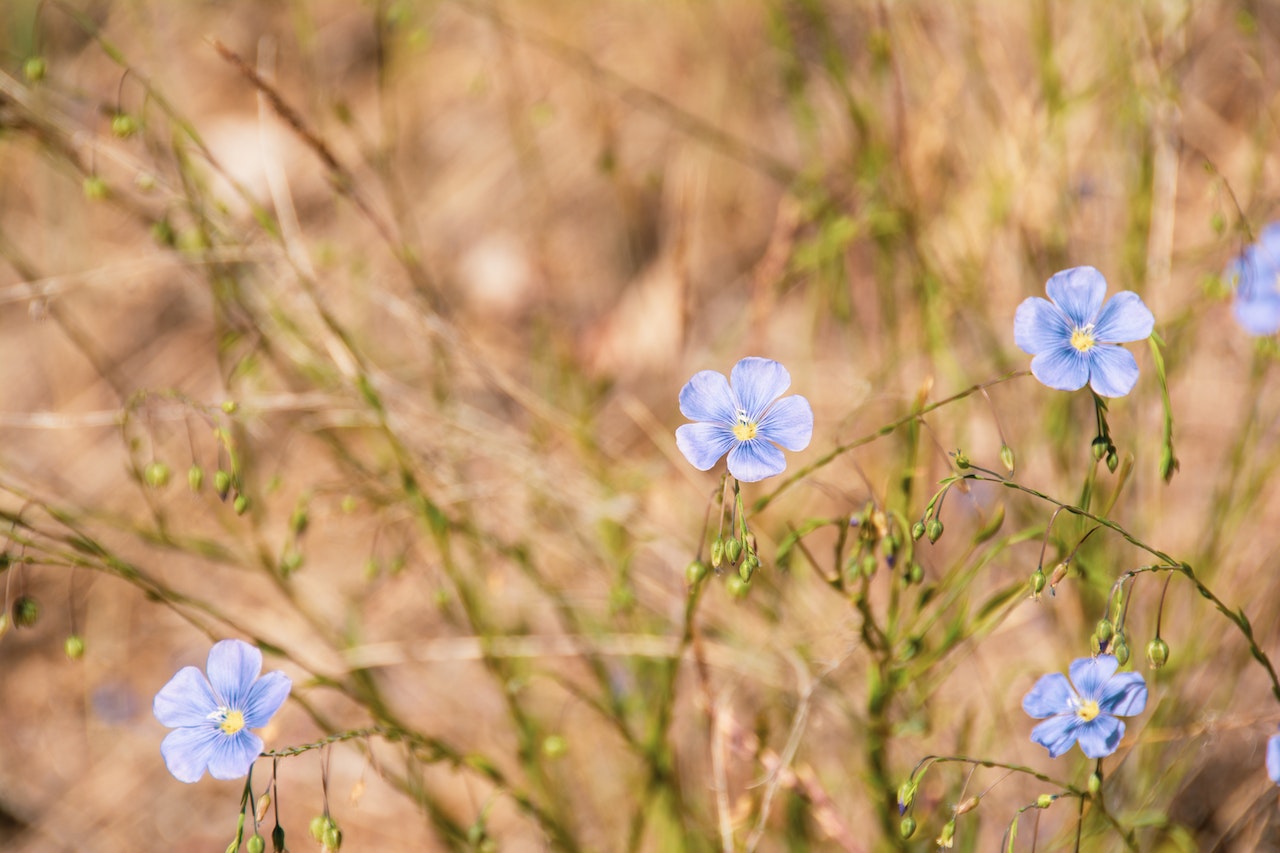If you’re growing flax in your garden, you might be wondering about the practice of deadheading and its impact on plant care. Deadheading involves removing spent flowers from the plant to encourage new growth and prevent self-seeding. Understanding the benefits of deadheading flax can contribute to maintaining a tidy garden and preventing the plant from spreading uncontrollably.
1. Deadheading for a Tidy Garden Throughout the Season
Deadheading flax throughout the growing season is a simple yet effective way to keep your garden looking tidy and vibrant. As flax blooms, the flowers eventually fade and lose their visual appeal. By deadheading these spent flowers, you encourage the plant to produce more blooms, extending the flowering period and enhancing the overall appearance of your garden.
The process of deadheading is straightforward. Simply snip off the faded flowers just below the base using pruning shears or sharp scissors. This practice redirects the plant’s energy away from seed production and towards new flower development.
2. Preventing Self-Seeding and Unwanted Spreading
While flax is an attractive addition to a garden, it has the potential to self-seed and spread quickly if not managed properly. Allowing the plant to go to seed at the end of the season can lead to a profusion of flax seedlings popping up in various areas of your garden.
By deadheading flax at the end of the season, you can prevent these self-seeding tendencies and maintain control over the plant’s growth. Removing the spent flowers before they have a chance to set seed reduces the likelihood of flax spreading and becoming invasive in your garden.
3. A Word of Caution: Optional Seed Collection
If you wish to collect flax seeds for future planting, you can allow a few flowers to mature and produce seeds. However, exercise caution when collecting seeds to ensure you don’t inadvertently promote unwanted spreading. It’s essential to monitor the plant closely and collect the seeds promptly before they disperse naturally.
Conclusion
Deadheading flax is a valuable practice for gardeners seeking to maintain a tidy and controlled garden landscape. Regular deadheading throughout the season enhances the appearance of the plant, while end-of-season deadheading prevents self-seeding and unwanted spreading. By employing this simple technique, you can enjoy the beauty of flax blooms without the worry of its unchecked proliferation in your garden.
FAQs (Frequently Asked Questions)
1. Will deadheading flax harm the plant in any way? No, deadheading flax does not harm the plant. On the contrary, it can be beneficial for the plant’s overall health and appearance. By removing spent flowers, you redirect the plant’s energy towards producing more blooms, leading to a prolonged and abundant flowering period. Additionally, deadheading prevents the plant from expending energy on seed production, which can be especially advantageous if you want to prevent self-seeding and maintain control over flax growth in your garden.
2. When is the best time to deadhead flax plants? The ideal time to deadhead flax plants is throughout the growing season as the flowers fade and lose their vibrancy. Regularly removing spent flowers encourages the plant to continue blooming, keeping your garden looking tidy and attractive. For preventing self-seeding and unwanted spreading, deadhead the flax at the end of the season, before the flowers have a chance to mature and produce seeds.
3. Can I still collect flax seeds for future planting if I deadhead the flowers? Yes, you can still collect flax seeds for future planting even if you deadhead the flowers. To do so, you can allow a few flowers to fully mature and produce seeds. However, be mindful of promptly collecting the seeds before they disperse naturally to prevent unwanted spreading. If you want to control the spread of flax in your garden, consider deadheading the majority of the flowers and only allow a select few to produce seeds for seed collection.

Leave a Reply